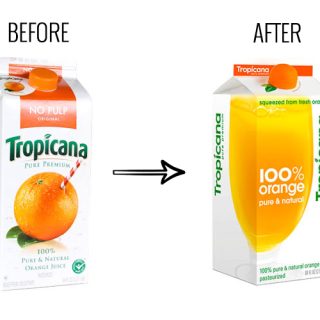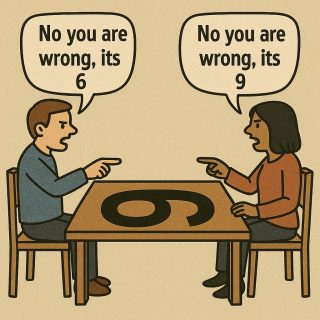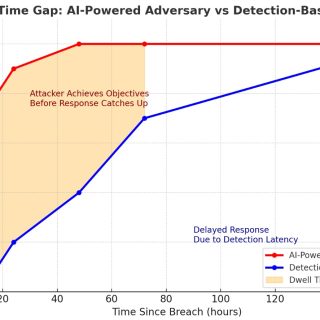
Why 90% of Rebrands Fail: The Neuroscience of Familiarity
Every few years, a new CMO declares:
“It’s time for a fresh look.”
The logo changes.
The packaging changes.
The website changes.
And then — sales collapse. 💥
Why?
Because most rebrands break one of the most powerful forces in human behavior:
👉 Status Quo Bias — our subconscious preference for things to stay the same.
But beneath that bias lies something even deeper:
the neuroscience of how the brain learns, remembers, and automates trust.
The Brain Science Behind Brand Familiarity
When customers interact with your brand repeatedly, their brain eventually moves that experience from learning mode to autopilot.
That shift is invisible but powerful — it’s what makes someone buy your product without thinking, recognize your logo in a split second, or feel safe clicking “Renew.”
But to understand why rebrands fail, we need to look at how the brain handles new learning versus learned habits.
How the Brain Handles Learning vs. Learned Behavior
1️⃣ When Something Is New, the Brain Is in “Learning Mode.”
Region: Prefrontal Cortex

When someone encounters something unfamiliar — a new logo, packaging, or brand name — their Prefrontal Cortex lights up.
This is the brain’s command center for reasoning, focus, and decision-making.
- It constantly asks: “What is this? Should I trust it? How does it compare to what I know?”
- It consumes huge amounts of glucose and oxygen, measurable in fMRI scans.
- It’s deliberate, analytical, and slow.
That means your customer’s brain is now working hard to re-learn you.
And because the brain prioritizes energy conservation, it doesn’t like this mode.
It resists. It hesitates.
That hesitation costs you the sale.
2️⃣ When Something Is Learned, the Brain Moves It to “Automatic Mode.”
Region: Basal Ganglia
Once a behavior is repeated — like choosing your favorite coffee or clicking a familiar app — control shifts to the Basal Ganglia, deep in the brain.
That’s where habits and automatic responses live.
- It’s fast and subconscious.
- It operates with minimal energy.
- It triggers dopamine when a familiar cue leads to a successful action (“This is what I wanted.”).
This is what Daniel Kahneman calls System 1 thinking — automatic, effortless, habitual.
Your brand becomes part of the brain’s shortcut system.

That’s the holy grail of marketing:
When customers no longer decide to buy you — they default to buying you.
3️⃣ Rebranding Breaks the Shortcut
🖼️ [Image suggestion: split brain visual showing “automatic vs analytical” with Basal Ganglia vs Prefrontal Cortex highlighted]
When you drastically change your visuals, name, or tone, the Basal Ganglia no longer recognizes its cue.
The brain goes:
“This doesn’t match what I know.”
Control shifts back to the Prefrontal Cortex, forcing conscious evaluation.
Now your customers must think again —
and thinking consumes energy.
That’s the real reason so many rebrands fail:
You’re not just updating design — you’re triggering the brain’s energy alarm.
To your marketing team it’s a “refresh.”
To the customer’s brain, it’s a new learning task.
And new learning is expensive.
4️⃣ The Energy Economics of Trust
The human brain uses about 20% of your body’s energy at rest.
When it encounters change, that usage spikes.
So the brain subconsciously avoids unnecessary re-learning.
That’s why people keep using the same brands, same routes, same passwords, same coffee — even when alternatives exist.
Familiarity = low energy = comfort.
Rebranding interrupts that equation.
The result: hesitation, confusion, loss of trust.
5️⃣ How the Brain Rebuilds Trust
If you disrupt your brand’s neural pattern, you can rebuild it — but it takes time and repetition.
The brain re-automates trust through:
- Repetition: consistent exposure to new cues.
- Consistency: same colors, shapes, and language reinforcing memory.
- Emotion: dopamine reinforcement when recognition feels rewarding again.
That’s why gradual evolution works better than sudden overhaul.
It gives the brain time to adjust without triggering full re-learning mode.
🍊 Tropicana’s $50 Million Neuroscience Lesson

In 2009, Tropicana replaced its iconic orange-with-a-straw with a minimalist glass of juice.
The result?
- The Basal Ganglia lost its cue.
- The Prefrontal Cortex had to re-analyze.
- Shoppers hesitated.
Sales dropped 20% in two months, a $50 million loss.
Customers didn’t “hate” the design — they simply didn’t recognize their juice.
➡️ Bias triggered: Status Quo Bias + Habit Disruption
Coca-Cola’s “New Coke” (1985): When Emotion Beat Data

Coke changed its beloved formula to beat Pepsi.
Blind taste tests said people liked it.
But emotionally, the change felt like betrayal.
The Limbic System, responsible for emotion and memory, still associated “Coca-Cola” with comfort, nostalgia, and identity.
When that was disrupted, customers reacted viscerally.
Within 79 days, “Coca-Cola Classic” was back.
➡️ Bias triggered: Loss Aversion + Emotional Anchoring
Gap’s 7-Day Logo Disaster (2010)

Gap replaced its familiar blue box with a plain Helvetica wordmark.
The new design looked fine — but it didn’t feel like Gap.
Neural recognition failed.
Online backlash was instant.
Within a week, Gap reversed the change.
➡️ Bias triggered: Familiarity Bias + Cognitive Ease
🧠 The Psychology Underneath
| Principle | Description |
|---|---|
| Status Quo Bias | The brain prefers existing pathways; change requires energy. |
| Mere Exposure Effect | Repetition breeds trust; familiar equals safe. |
| Cognitive Ease | The easier something is to process, the better it feels. |
| Loss Aversion | Change is perceived as risk; loss feels worse than gain feels good. |
| Energy Conservation | The brain avoids unnecessary re-learning. |
Rebranding doesn’t just confuse the eye — it taxes the brain.
⚙️ Why CMOs Miss It
Inside the company, everyone is tired of the old design.
You see it every day.
But customers don’t.
They see it occasionally — and their brains love that consistency.
When you “refresh” it for internal excitement, you accidentally destroy the external comfort loop that drives buying behavior.
You lose not because your design is bad —
you lose because your customers’ neurons were comfortable, and you woke them up.
✅ The 10% That Get It Right
Successful rebrands don’t break neural pathways — they reinforce them.
They modernize while preserving the recognition cues the brain depends on.
🍎 Apple — Evolution, Not Revolution

Apple’s logo evolved from rainbow to chrome to minimalist black.
But the shape — the bitten apple — never changed.
It feels fresh, yet instantly recognizable.
The neural circuit of recognition remains untouched.
➡️ Bias respected: Cognitive Ease + Continuity Anchoring
🧱 LEGO — Simplify Without Losing Soul

LEGO has refined typography and outlines over decades,
but kept the red square and yellow letters constant.
Children and adults trigger the same recognition memory — across generations.
➡️ Bias respected: Mere Exposure Effect + Status Quo Bias
McDonald’s — From Fast Food to Feel-Good

McDonald’s evolved from “fast food” to “moments of joy,”
but never touched the golden arches or red palette.
They changed meaning without changing memory.
➡️ Bias respected: Emotional Anchoring + Familiarity Bias
Spotify — Modern Look, Same Neural Cue

Spotify refreshed its green hue and typography,
but kept the circular soundwave mark.
The Basal Ganglia still recognizes the cue — so no re-learning required.
➡️ Bias respected: Cognitive Ease + Habit Preservation
Pattern Summary
| Brain Principle | Failures Violated | Successes Honored |
|---|---|---|
| Status Quo Bias | Tropicana, Gap, Coke | LEGO, McDonald’s |
| Familiarity Bias | Gap, Tropicana | Apple, Spotify |
| Cognitive Ease | All failures | Apple, LEGO |
| Emotional Anchoring | Coca-Cola | McDonald’s |
| Neural Efficiency | All | Successful brands kept it low-cost cognitively |
How to Rebrand Without Breaking the Brain
- Keep your anchors. Preserve the shapes, colors, and cues that trigger memory.
- Transition gradually. Evolution, not revolution.
- Communicate continuity. Emphasize what’s staying the same.
- Test for recognition, not just liking. People may “like” what they no longer recognize.
- Respect the brain’s efficiency. The less it must re-learn, the more it will trust.
The Big Takeaway
Rebranding isn’t cosmetic — it’s neurological.
You’re not changing colors; you’re reprogramming neural networks tied to trust, comfort, and identity.
Good brands live in the Basal Ganglia — the habit system.
Bad rebrands force customers back into the Prefrontal Cortex — the evaluation system.
So before you say “let’s modernize,” ask:
“Are we evolving — or are we making our customers think too hard?”
Because in branding, as in neuroscience,
familiarity isn’t laziness — it’s efficiency.
And efficiency is what the brain — and your bottom line — are wired to love.



